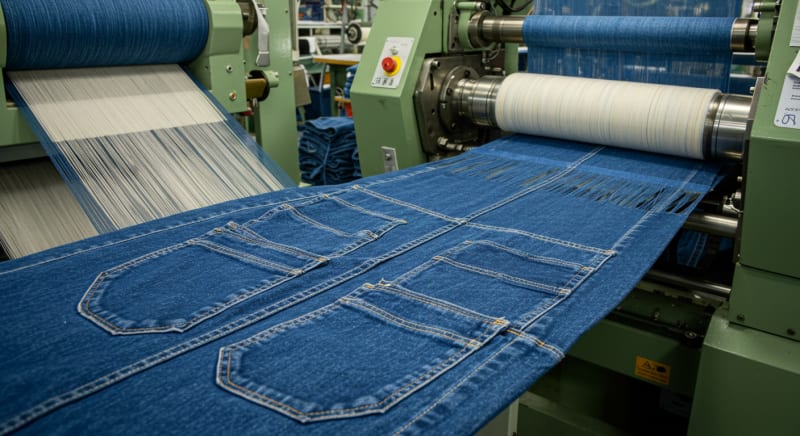

Step-by-Step Guide to the Denim Jeans Manufacturing Process
Denim jeans are globally admired as kids, adults, and teens love wearing and styling them with other clothing products. However, what is the process of denim jeans manufacturing? How is the denim textile cut and sewn into the marvelous pair of pants? Many people, especially many clothing line owners, feel curious about the making of denim jeans. This is what this article is all about. It has all the information about how manufacturers create denim jeans, the methods they use, and the machines they employ to process denim into making jeans.
What Is Denim?
Before we jump to the part where I tell you about the making of denim jeans, let’s learn about the fabric itself. Denim is a sturdy or slightly rough fabric that is made of 100% cotton. Blue shade is the common one, but there are other shades like grey, brown, and black. Other than jeans, people also wear denim jackets and shirts. One important thing is that making denim jeans is not easy, which is why brands are suggested to hire manufacturers to get the best-quality custom jeans. A reliable jeans manufacturer offers complete customization, perfect cut and sew, printing, and all the essential elements that make jeans worth wearing.
Denim Manufacturing Process Steps
Denim is one of the most popular materials across the world, which is created with the remarkable skills of experts. Let’s give you the steps of the denim production process:
Step 1: Blend the Cotton
The first step in making jeans is blending cotton, which includes mixing batches of cotton to add color, strength, and texture. Blending cotton also ensures uniformity in the jeans. Seeds and weeds, the impurities, are scraped off each bale and the fiber is brought into a mixture to wash it. Then some more batches of cotton are blended again for the perfect mixing. This part can be done either by hand or by using a special machine.
Step 2: Spin the Cotton
Spinning is absolutely essential in forming cotton-made products. Cotton spinning is a tough process that requires the skills of professionals. The fibers are drawn out into longer threads by twisting them.
Step 3: Dye or Color the Threads Step
This is the part where denim jeans are given their true blue-indigo shade. There are two dyeing methods:
- Indigo dyeing
- Non-Indigo dyeing
Indigo dyeing:
Warp yarns are dyed using a rope or slasher dyeing method. This method induces a wash-down effect, giving denim jeans the ability to stay vibrant for a longer period.
Non-indigo dyeing:
Non-indigo dyeing is also known as sulfur dyes. It is more frequently employed in the denim warm dyeing process. It requires less water utilization.
Step 4: Weave Denim Fabric
Weaving impacts the quality of denim jeans directly. This is a crucial step, which is why nothing should go wrong if we want to have the best quality jeans. In this step, the manufacturers weave the denim material as a 3/1 twill, employing grey weft and an interlaced warp. Then come the yarn counts that account for the fabric’s properties like drape, weight, tightness, tensile strength, and cover. Today, manufacturing companies use automated machines to carry out this process under the supervision of experts.
Step 5: Joining Techniques
This step includes giving the denim jeans its shape, fit, and style. This is the part where the experts sew the jeans’ parts together to give them a unique style or design.
Step 6: Digital Printing
Denim coloration takes place in this step. Specialized inkjet printers are used to apply ink onto the fabric. Digital printing is also used to print various designs on the jeans.
Step 7: Wash the Denim
Washing the denim garment is significant in giving the fabric an aesthetic feel and appeal. Washing gives denim its true form and color that attract its admirers.
Step 8: The Final Stage Finishing
This is the final stage that gives denim its inspiring qualities. It involves multiple wet and dry processes to keep it from fading. In this step, the manufacturers give denim its functional finishing to enhance its style.
Conclusion
Denim jeans are a fashion staple among teens, adults, and all age groups. The reason is denim’s style and appearance. The fabric is blended with cotton and processed further by experts to make the perfect denim jeans. All of the steps are mentioned in the blog that you can read and gain proper knowledge of the denim manufacturing process.